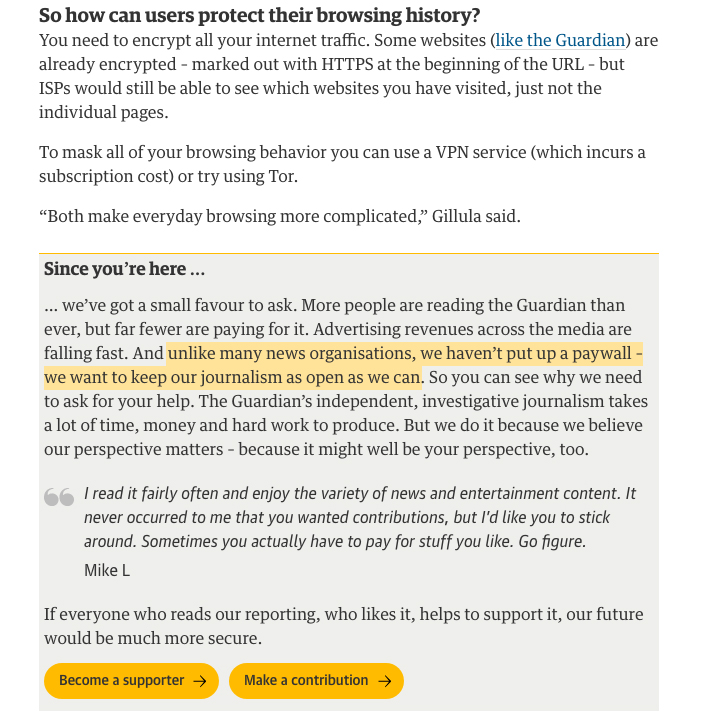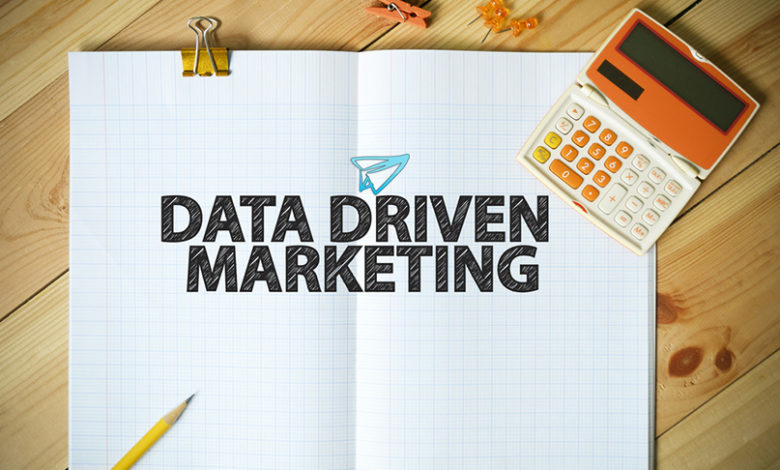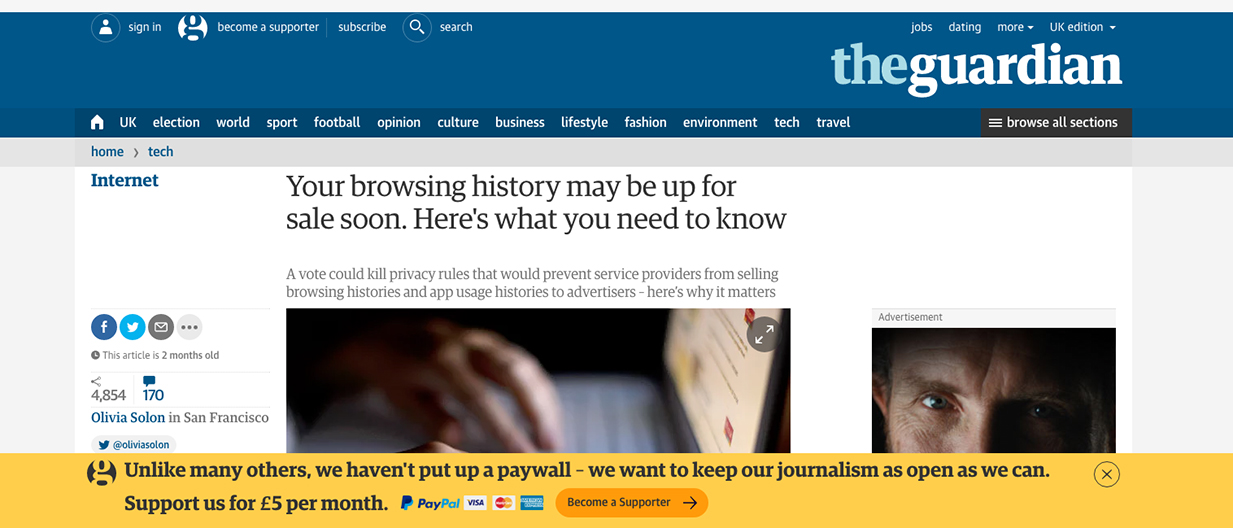Many consumers remain suspicious about it and even the term ‘data monetisation’ can prompt consumer concern that brands are making money from their personal asset. But it’s time to explain how it all works, how to make ourselves proud of our industry and how, actually, data makes the world go round:
The idea of customer data monetisation has been around for a long time, but remains one that’s rarely talked about freely, in the open. The very term ‘data monetisation’ can often prompt concerns about consumers feeling brands and data companies are unjustly making money from their personal asset. However, as we all know, data and indeed the whole practice of data management, has now moved so far, so fast, the sophistication and value proposition for all is way beyond this simplistic summation. It’s time to clarify and simplify this important subject. After all, if we as an industry are shy about explaining these things, how can we ever expect consumers to relax any suspicions they may have?
Put simply, data monetisation is when one company makes it safe and commercially attractive for another company or companies to use their data. The reality is, there is far greater sophistication involved, including governance, collection, storing, processing, analysing, curating, distribution of data and the associated financial transactions. The value creation is also something that needs to be clarified.
Data security and data monetisation
Before we go any further, we should address what is surely the single biggest reason ‘data monetisation’ is something of a sensitive term. The reality is, consumers increasingly see data about them as their own personal asset. They also hold themselves primarily responsible for their data’s security. Both these findings came from the UK DMA’s ‘2015 Data Privacy – What the consumer really thinks’ research. It’s clear consumers are more comfortable about data, sharing it but it’s equally clear they want it to be secure and transparent.
Brands and marketers increasingly want to deliver a better customer experience across the digital and physical ecosystems we all interact with daily. We know the only way we can do this is by using data. And so it follows that good data, despite the ‘bigness’ of it these days, is a precious asset that can really boost the relevance, effectiveness and efficiency of marketing. The truth is, there’s also something in it for the consumer, or at least there should be.

UK TV presenter Alan Carr makes the Channel 4 data promise.
In the UK, brands like Channel 4 and The Guardian have led the way in terms of making it clear they want their customers’ data and want to monetise it. They’re transparent in saying the money they make from it helps fund their independence and content. Great. Consumers seem to get it and on the whole, are very happy with it. Consumers are a lot more reasonable than some think but the key to this is helping them understand, through transparency.
 There’s also the fact that if better data is brought together, better marketing will result. In the busy world we live in, few would want more random messages and most would opt for relevance. In my experience of more than 20 years in data driven marketing, I’ve never once seen an occasion where someone has attempted to use data with anything other than good intent. It happens, because every industry has a rogue element – those who will not play by the rules in order to make a fast buck. Let’s focus on driving them out as the vast majority of us use data for good.
There’s also the fact that if better data is brought together, better marketing will result. In the busy world we live in, few would want more random messages and most would opt for relevance. In my experience of more than 20 years in data driven marketing, I’ve never once seen an occasion where someone has attempted to use data with anything other than good intent. It happens, because every industry has a rogue element – those who will not play by the rules in order to make a fast buck. Let’s focus on driving them out as the vast majority of us use data for good.
Sadly, bad news makes the headlines rather than perhaps a hypothetical case where a 4×4 car company makes some of its data available that is of great value to a manufacturer of hiking gear, that results in a better deal for the person interested in both. A three-way win that will never make the news.
In terms of making data or audience monetisation happen, we see and indeed support, two main routes. One is ‘direct audience monetisation’ where a brand’s data can be curated and made available with major publishers and platforms. The other is ‘collaborative audience monetisation’ where brands come together to share relevant data in a safe environment, where the PII (Personally Identifiable Information) is protected. An example of this could be a major retailer collaborating with the brands they sell. In the past, this could be a frosty relationship as each side tried to get the best deal. Now, we’re seeing a new way of thinking where data shared means a better relationship for them, better measurement, better marketing and a better experience and offers for consumers. It remains data monetisation because those making the data available are getting value back, but looked at holistically, it’s a better result for all.
The time is right to elevate data and audience monetisation. In addition to the research already mentioned, a recent global survey by Microsoft revealed that nearly all of consumers (99%) are willing to share personal data in exchange for rewards or personalised benefits, provided that brands respect the level of trust this relationship offers. It is becoming clearer that consumers increasingly see this value exchange as a part of normal brand interactions.
Data monetisation is, by now, a pretty standard industry term but in some ways it fails us in that it describes only part of the bigger picture I’ve tried to describe. So, while using that term, or of course audience monetisation, we shouldn’t just talk about companies generating revenue from their data, we should talk about how that revenue may be helping subsidise and protect their products and services, as in the Channel 4 case. We should talk about how it’s helping brands that buy the data be more targeted and relevant and how that in turn delivers a better customer experience and better deals for consumers. That’s the full picture.
These days, data really does make the world go round, with consumers savvier than ever before – the research proves it. So, put data to good, safe, smart and ethical use. Monetise, share and use the data to make marketing better. Done well, it’s something to be proud of not hide behind, just remember Rule One – be transparent.
Read also:
Intelligent ABM: Why data is your passport to success
When it comes to data technology, ‘Blessed are the Geek’





 There’s also the fact that if better data is brought together, better marketing will result. In the busy world we live in, few would want more random messages and most would opt for relevance. In my experience of more than 20 years in data driven marketing, I’ve never once seen an occasion where someone has attempted to use data with anything other than good intent. It happens, because every industry has a rogue element – those who will not play by the rules in order to make a fast buck. Let’s focus on driving them out as the vast majority of us use data for good.
There’s also the fact that if better data is brought together, better marketing will result. In the busy world we live in, few would want more random messages and most would opt for relevance. In my experience of more than 20 years in data driven marketing, I’ve never once seen an occasion where someone has attempted to use data with anything other than good intent. It happens, because every industry has a rogue element – those who will not play by the rules in order to make a fast buck. Let’s focus on driving them out as the vast majority of us use data for good.



Leave your thoughts